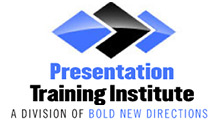When to Schedule Part II or the Sequel Presentations aren’t always a “one and done†scenario. Oftentimes, a topic might be so broad or so complex that it takes more than one presentation to cover all of the material. This means presenters will need to figure out how to time it right so Part I…
Read More »Print Handouts or Digital Data?
Print Handouts or Digital Data? As if standing up in front of an audience and delivering a presentation weren’t difficult enough, now you are faced with another dilemma…to use or not to use handouts. Many speakers choose to use handouts to supplement their presentation but are they always necessary? Is it enough to simply rely…
Read More »Post-Presentation Follow Up- Questions, Comments, Casual Conversation
Post-Presentation Follow Up- Questions, Comments, Casual Conversation Your presentation doesn’t end the moment you stop talking. Although you might be prepared to breathe that sigh of relief after giving a smooth delivery, you must remember that the presentation itself is only part of the process. It is important to put as much time into your…
Read More »Pre-Presentation Setup- Meeting the Audience
Pre-Presentation Setup- Meeting the Audience Contrary to popular belief, your presentation doesn’t have to start the moment you begin speaking. Your presentation can actually begin long before you take the stage. Thanks to technology, there are plenty of ways to get your audience excited long before you ever walk up to the podium. You can…
Read More »How to Use an Effective Ice Breaker
Icebreakers can be a great way to start a meeting, training session, or group discussion, as they help to set the tone for the presentation. They can help in relaxing the participants, which then makes them more receptive to listening and participating. Ice breakers can also be a fun and interactive way to help participants…
Read More »The Do’s and Don’ts of Audience Interaction
The problem with many business presentations is that they don’t have a two-way interaction. Oftentimes the presenter simply pushes information at the audience. While this might seem like an easy approach to presenting, the fact is it’s not effective. The object of any presentation is for the audience to absorb and retain the information and…
Read More »When to Use Notes During a Presentation
Giving a presentation is no easy feat and most people feel more comfortable about it when they have notes in front of them. Even if they don’t use the notes the entire time, something about knowing they are there is enough to make the speaker feel more at ease. This begs the question: Is it…
Read More »Jokes: What Works and What Doesn’t with Various Types of Humor
Using humor in presentations is not always a laughing matter. Sometimes it can backfire and actually hurt your credibility. Other times, humor can help you stand out and build a rapport with your audience. How, then, do you know when to use humor in your presentation? In general, humor can be beneficial for increasing the…
Read More »What to Do with Your Hands When Speaking to a Group
Most of us have had to speak in public at some point in our lives and we have been given plenty of advice about it. You have probably been told to keep your hand gestures to a minimum so you don’t distract the audience from listening to your words. However, as soon as you stand…
Read More »Audio Range- Voice Modulations from Soft to Loud
Voice modulation refers to the way you control or adjust your voice and it is an important component of communication because it fills your words with expression and emotion. It is especially important in public speaking because it helps the audience to clearly hear and understand the presentation. By mastering the art of voice modulation,…
Read More »